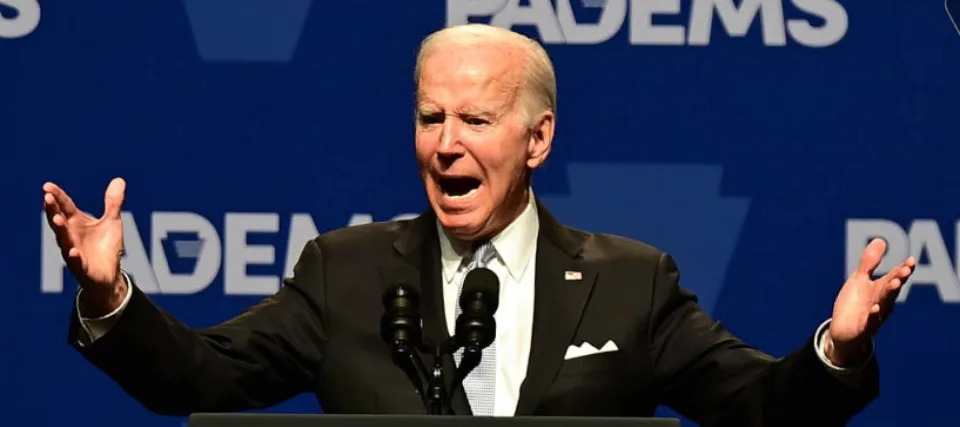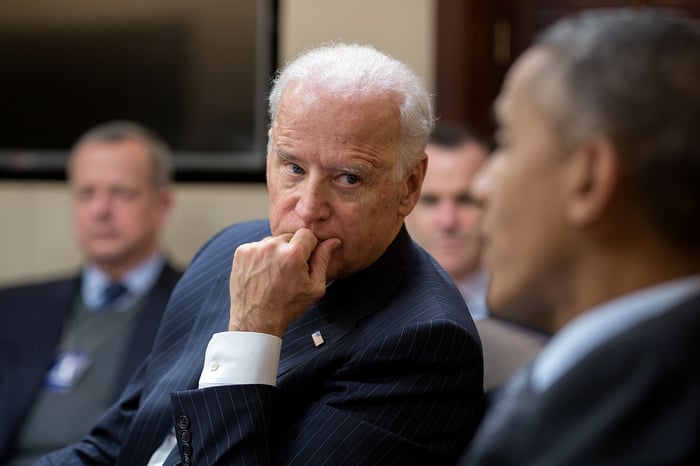CRIMINAL CRYPTO CAPITALI$M FTX
Boies law firm makes odd moves in FTX case against Tom Brady, celebsAlison Frankel
Thu, December 15, 2022

Lawyer David Boies speaks on the phone after a bail hearing in
U.S. financier Jeffrey Epstein's sex trafficking case in New York City
By Alison Frankel
(Reuters) - The law firm led by famed litigator David Boies appears to have engaged in some unusual litigation tactics on behalf of FTX crypto exchange users who accuse NFL quarterback Tom Brady, supermodel Gisele Bundchen, comedian Larry David and other celebrities of inducing them to open FTX accounts.
This tale ventures deep into the weeds of federal court filing procedures, but the upshot is that Boies’ firm, Boies Schiller Flexner, and co-counsel from The Moskowitz Law Firm filed three different but obviously related FTX lawsuits in the same federal court in Miami without asking the court to consolidate the cases before just one judge.
The cases were assigned to three different Miami federal judges before the judges realized they were related. Last week, U.S. District Judge Michael Moore of Miami entered an order consolidating the lawsuits and clarifying that he will oversee the litigation.
That was apparently not what the Boies and Moskowitz firms were hoping. In mid-November, the firms filed the first of their three FTX lawsuits in federal court. The suit, a class action on behalf of FTX accountholders in the U.S., alleged that FTX founder Sam Bankman-Fried and celebrity endorsers violated Florida securities and consumers laws by promoting the FTX yield-bearing accounts as a safe way to invest in cryptocurrencies.
I’ll pause here to point out that law firm Latham & Watkins, which is representing Brady, Bundchen and David, declined to comment on the cases. Bankman-Fried counsel Mark Cohen of Cohen & Gresser did not respond to a query. I also did not receive a response from the NBA’s Golden State Warriors, which is also named as a defendant.
As you are doubtless aware, Boies is known for high-profile matters, including his representation of Democratic presidential candidate Al Gore in the U.S. Supreme Court case that decided the election of 2000. More recently he has represented Jeffrey Epstein accusers including Virginia Giuffre.
On the official form that accompanied Boies Schiller's FTX lawsuit, which is known as a cover sheet, the Boies and Moskowitz firms said the FTX class action was related to a different class action that the firms are litigating on behalf of crypto investors who used the Voyager Digital Ltd platform. The Voyager case similarly accuses a celebrity crypto endorser – Dallas Mavericks owner Mark Cuban – of deceptive promotion of a crypto investment. Cuban counsel Stephen Best of Brown Rudnick told me he is confident the class action will be tossed, in part because Voyager account holders did not rely on Cuban's endorsement.
Presiding over that case is U.S. District Judge Roy Altman, who was a partner at the plaintiffs' firm Podhurst Orseck before joining the bench in 2019. He has yet to rule on Cuban's motion to dismiss the case, but in November determined that the Boies and Moskowitz firms were entitled to discovery from Cuban.
By asserting that the first FTX suit was related to the Cuban case before Altman, the Boies and Moskowitz firms apparently hoped Altman would also be appointed to oversee the FTX class action, even though there was no overlap between the plaintiffs and defendants in the cases.
The court instead assigned the case to Moore, a George H.W. Bush appointee and former federal prosecutor, on the same day it was filed.
On Nov. 21, the Boies and Moskowitz firms filed a second FTX class action, this time on behalf of non-U.S. FTX customers. The cover sheet said the case was not related to any other proceeding in Miami federal court, although it mentioned the Voyager class action in a box where such information can be listed. The cover sheet did not refer to the case before Moore.
The second suit was assigned to U.S. District Judge Darrin Gayles.
On Dec. 7, the Boies and Moskowitz firms filed a third FTX class action in federal court in Miami, this time on behalf of all FTX customers, in and out of the U.S. Once again, the cover sheet for the filing did not mention the firm’s previous (and very similar) FTX suits. Once again, the Voyager class action showed up in the box for related cases.
The third suit was assigned to U.S. District Judge Beth Bloom. (Both Bloom and Gayles are former Florida state-court judges who were appointed by former President Barack Obama).
The day after Bloom’s assignment to the case, the Moskowitz and Boies firms voluntarily dismissed the two previously-filed FTX class actions before Moore and Gayles. They then submitted an amended complaint in the case before Bloom, adding the lead plaintiffs from the other two now-dismissed suits.
Those maneuvers seem to have caught Bloom’s attention. She issued an order on Dec. 9, transferring the remaining class action to Moore, who had been assigned the first suit filed by Moskowitz and Boies. Moore issued his order consolidating the litigation in his courtroom on the same day.
I emailed Adam Moskowitz of the Moskowitz firm and four Boies Schiller lawyers, including David Boies, to ask why they had said the first FTX suit was related to the Voyager case and why they failed to disclose that their second and third FTX suits were related to the first class action. Specifically, I asked if they were trying to avoid Moore and get the FTX litigation before Altman, the judge overseeing the Voyager case.
Moskowitz said in two email responses that the firms’ goal has always been to have all of the federal cases consolidated before one judge. (His firm and the Boies firm also have filed several cases in Florida state courts.)
“As we got more cases, we filed more cases,” Moskowitz said. “We wanted to make sure to cover all of these victims.”
Moskowitz said the firms “always try our best to complete all information on all court forms.” He and Boies lawyers, he said, have been coordinating with defense counsel in both the state and federal FTX cases, despite the “different cases, different clients and different law firms.”
Both the state and federal cases, Moskowitz said, are now sorted out and will be overseen by one judge in federal court and one in state court.
“After four weeks of hard work, cooperation and coordination, including with defense counsel, we are happy to at least have two avenues for all of those victims across the globe (in Florida state and federal courts),” Moskowitz said. “It is a good day for the victims.”
Boies lawyers did not respond beyond Moskowitz’s emails.
Read more:
FTX's Bankman-Fried, Tom Brady and other celebrity promoters sued by crypto investors
By Alison Frankel
(Reuters) - The law firm led by famed litigator David Boies appears to have engaged in some unusual litigation tactics on behalf of FTX crypto exchange users who accuse NFL quarterback Tom Brady, supermodel Gisele Bundchen, comedian Larry David and other celebrities of inducing them to open FTX accounts.
This tale ventures deep into the weeds of federal court filing procedures, but the upshot is that Boies’ firm, Boies Schiller Flexner, and co-counsel from The Moskowitz Law Firm filed three different but obviously related FTX lawsuits in the same federal court in Miami without asking the court to consolidate the cases before just one judge.
The cases were assigned to three different Miami federal judges before the judges realized they were related. Last week, U.S. District Judge Michael Moore of Miami entered an order consolidating the lawsuits and clarifying that he will oversee the litigation.
That was apparently not what the Boies and Moskowitz firms were hoping. In mid-November, the firms filed the first of their three FTX lawsuits in federal court. The suit, a class action on behalf of FTX accountholders in the U.S., alleged that FTX founder Sam Bankman-Fried and celebrity endorsers violated Florida securities and consumers laws by promoting the FTX yield-bearing accounts as a safe way to invest in cryptocurrencies.
I’ll pause here to point out that law firm Latham & Watkins, which is representing Brady, Bundchen and David, declined to comment on the cases. Bankman-Fried counsel Mark Cohen of Cohen & Gresser did not respond to a query. I also did not receive a response from the NBA’s Golden State Warriors, which is also named as a defendant.
As you are doubtless aware, Boies is known for high-profile matters, including his representation of Democratic presidential candidate Al Gore in the U.S. Supreme Court case that decided the election of 2000. More recently he has represented Jeffrey Epstein accusers including Virginia Giuffre.
On the official form that accompanied Boies Schiller's FTX lawsuit, which is known as a cover sheet, the Boies and Moskowitz firms said the FTX class action was related to a different class action that the firms are litigating on behalf of crypto investors who used the Voyager Digital Ltd platform. The Voyager case similarly accuses a celebrity crypto endorser – Dallas Mavericks owner Mark Cuban – of deceptive promotion of a crypto investment. Cuban counsel Stephen Best of Brown Rudnick told me he is confident the class action will be tossed, in part because Voyager account holders did not rely on Cuban's endorsement.
Presiding over that case is U.S. District Judge Roy Altman, who was a partner at the plaintiffs' firm Podhurst Orseck before joining the bench in 2019. He has yet to rule on Cuban's motion to dismiss the case, but in November determined that the Boies and Moskowitz firms were entitled to discovery from Cuban.
By asserting that the first FTX suit was related to the Cuban case before Altman, the Boies and Moskowitz firms apparently hoped Altman would also be appointed to oversee the FTX class action, even though there was no overlap between the plaintiffs and defendants in the cases.
The court instead assigned the case to Moore, a George H.W. Bush appointee and former federal prosecutor, on the same day it was filed.
On Nov. 21, the Boies and Moskowitz firms filed a second FTX class action, this time on behalf of non-U.S. FTX customers. The cover sheet said the case was not related to any other proceeding in Miami federal court, although it mentioned the Voyager class action in a box where such information can be listed. The cover sheet did not refer to the case before Moore.
The second suit was assigned to U.S. District Judge Darrin Gayles.
On Dec. 7, the Boies and Moskowitz firms filed a third FTX class action in federal court in Miami, this time on behalf of all FTX customers, in and out of the U.S. Once again, the cover sheet for the filing did not mention the firm’s previous (and very similar) FTX suits. Once again, the Voyager class action showed up in the box for related cases.
The third suit was assigned to U.S. District Judge Beth Bloom. (Both Bloom and Gayles are former Florida state-court judges who were appointed by former President Barack Obama).
The day after Bloom’s assignment to the case, the Moskowitz and Boies firms voluntarily dismissed the two previously-filed FTX class actions before Moore and Gayles. They then submitted an amended complaint in the case before Bloom, adding the lead plaintiffs from the other two now-dismissed suits.
Those maneuvers seem to have caught Bloom’s attention. She issued an order on Dec. 9, transferring the remaining class action to Moore, who had been assigned the first suit filed by Moskowitz and Boies. Moore issued his order consolidating the litigation in his courtroom on the same day.
I emailed Adam Moskowitz of the Moskowitz firm and four Boies Schiller lawyers, including David Boies, to ask why they had said the first FTX suit was related to the Voyager case and why they failed to disclose that their second and third FTX suits were related to the first class action. Specifically, I asked if they were trying to avoid Moore and get the FTX litigation before Altman, the judge overseeing the Voyager case.
Moskowitz said in two email responses that the firms’ goal has always been to have all of the federal cases consolidated before one judge. (His firm and the Boies firm also have filed several cases in Florida state courts.)
“As we got more cases, we filed more cases,” Moskowitz said. “We wanted to make sure to cover all of these victims.”
Moskowitz said the firms “always try our best to complete all information on all court forms.” He and Boies lawyers, he said, have been coordinating with defense counsel in both the state and federal FTX cases, despite the “different cases, different clients and different law firms.”
Both the state and federal cases, Moskowitz said, are now sorted out and will be overseen by one judge in federal court and one in state court.
“After four weeks of hard work, cooperation and coordination, including with defense counsel, we are happy to at least have two avenues for all of those victims across the globe (in Florida state and federal courts),” Moskowitz said. “It is a good day for the victims.”
Boies lawyers did not respond beyond Moskowitz’s emails.
Read more:
FTX's Bankman-Fried, Tom Brady and other celebrity promoters sued by crypto investors














